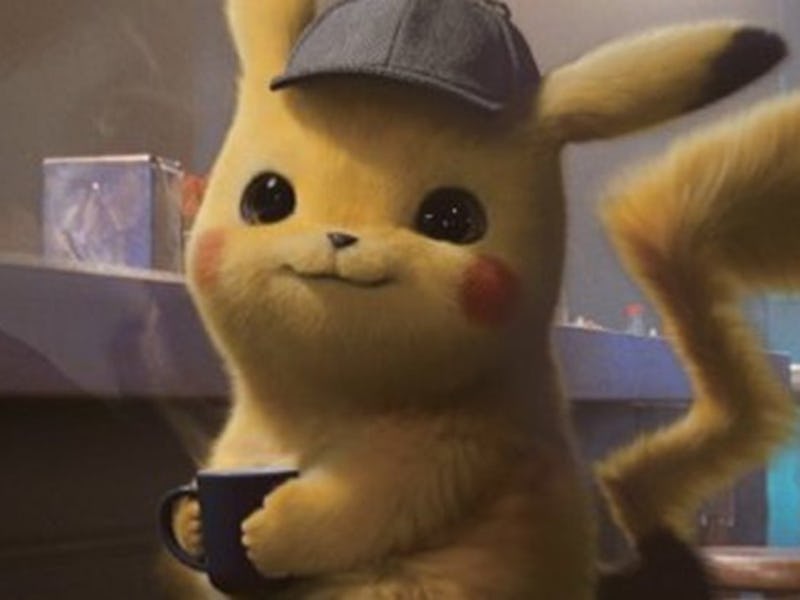How Pokémon Changed the Brains of People Who Grew Up Playing the Game
Original fans may have a different experience watching Detective Pikachu.

For a lot of kids in the late ‘90s and early 2000s, life came in two colors: Pokémon Red and Pokémon Blue. The Nintendo Game Boy games seemed life changing, turning recess into journeys out of Pallet Town and after-school hangouts into tense Pokémon battles. At least one of those young trainers grew up to be a scientist who discovered yet another effect the game had on a generation of kids: Pokémon shaped a part of their brains.
In an article in Nature Human Behavior published Monday, a team led by University of California, Berkeley psychology researcher Jesse Gomez, Ph.D., shows that people who grew up playing a lot of Pokémon have a special part of their brain that becomes active when they see Pokémon as adults, as many will do when they inevitably watch Detective Pikachu. It’s helping answer questions about how the brain learns to recognize things — especially the kind don’t occur in the natural world, like Clefairies and Geodudes.
Previously, scientists had established that there are distinct parts of the brain that light up when a person looks at a face, or an animal, or even certain natural objects. Specialized neurons seem primed to respond to that kind of visual data, which is common in the world; it’s likely that they evolved to help our ancestors quickly recognize these things in the wild, which in turn probably helped them survive. But the brain’s ability to recognize Pokémon is another thing. Clearly, it can do it. But how?
Clefairy, one of the Pokémon featured in the diagrams in Gomez's study. The brains of "experienced" players became active when they saw images of Pokémon.
In 2012, research on macaques at Harvard Medical School suggested that the brain can learn to dedicate parts of the brain to highly specific categories of images, but only if that exposure happens repeatedly, at a very young age. Gomez saw the opportunity to test this idea on humans like himself, who were exposed to Pokémon for many hours at a very young age under tightly controlled conditions — on a small screen held about a foot’s length away from the face. He, along with ten others who had started playing the game between the ages of five and eight and continued playing as adults (all Ph.D. holders, he noted), were the “experienced” Pokémon players pit against the 11 “novices’ that took part in this experiment.
All of the participants went under an fMRI machine to scan their brain activity while they looked at images of all original 150 Pokémon, from Bulbasaur to Mewto. As the team expected, a specific brain region lit up in the experienced players’ brains every time they looked at one of the characters, but the same couldn’t be said for the novices, who had no childhood or adult experience with the game.
The Game Boy Color exposed Pokémon players to the same small screen. (The Pikachu link let two players battle one another, pre-WiFi and Bluetooth)
Gomez and his team noticed that the brain activity was focused on one particular pea-sized part of the brain specific to images viewed using central (that is, head-on) rather than peripheral vision. That made total sense — Game Boy screens were so small they had to be looked at directly — and was consistent with a theory called “eccentricity bias.” This theory says that the brain dedicates its parts to new classes of objects based on how much room they take up on our visual fields and whether we view them peripherally or directly. Had kids played on uniformly giant screens growing up, this theory suggests the Pokémon-specific region would take up more of the brain and be located together in the peripheral-focused region.
Before anyone frames this as a negative impact of video games, take note of the other highly specific neuron clusters that have been found in the past: the famous Jennifer Aniston neuron, similar to those that spark for Halle Berry, Kobe Bryant, and Julia Roberts. They’re evidence that the brain will set aside resources for recognition if it encounters the same images commonly enough — and crucially, as this study shows, if those images are viewed between the ages of five and eight.
Knowing what happens in this developmental window — when kids’ brains are pliant and open to reorganization — could be particularly important for understanding childhood reading, the study authors write. Just as playing Pokémon for hours on end requires exposure to a lot of small images, reading does too, and both activities elicit brain activation in predictable (though not the same) areas at an early age.
Pokémon novices, don’t worry: your grown-up brain may not have a cluster of neurons set aside for Charmander and his kin, but adults can learn, too. Previous research, the authors note, suggests the adult brain can develop more selective responses to images that they’ve “learned,” too — just not by dedicating a specific part of the brain to them, which seems available only to the OG fans.